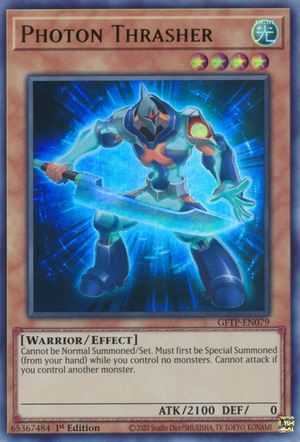Special Summon-only monster

"Photon Thrasher", a Special Summon-only monster.
Special Summon-only monsters, informally known as Semi-Nomi monsters, is a category of Special Summon Monsters with printed Special Summoning procedures, and can be Special Summoned by other effects (from public knowledge locations) once they are properly Special Summoned.
They are distinguished from "Nomi" monsters, who also have printed Special Summoning procedures, but cannot be Special Summoned by effects even after they are properly Special Summoned.
List of Special Summon-only monsters[edit]
Card text[edit]
Current Special Summon-only monsters are identified by the following card text:
- "Cannot be Normal Summoned/Set." (for Main Deck non-Ritual monsters)
- "Must first be [Summon procedure]."[1]
Earlier card texts do not distinguish between "Must be" and "Must first be" distinctions, and thus, their status as Special Summon-only monsters can only be distinguished through card-specific ruling.
References[edit]
- ↑ Taketa, Gregory (7 December 2009). "Special Summons – Spotting the Different Kinds". Yu-Gi-Oh! TRADING CARD GAME STRATEGY SITE. Retrieved 25 April 2018.